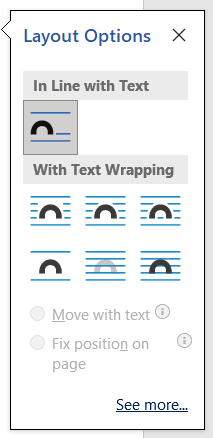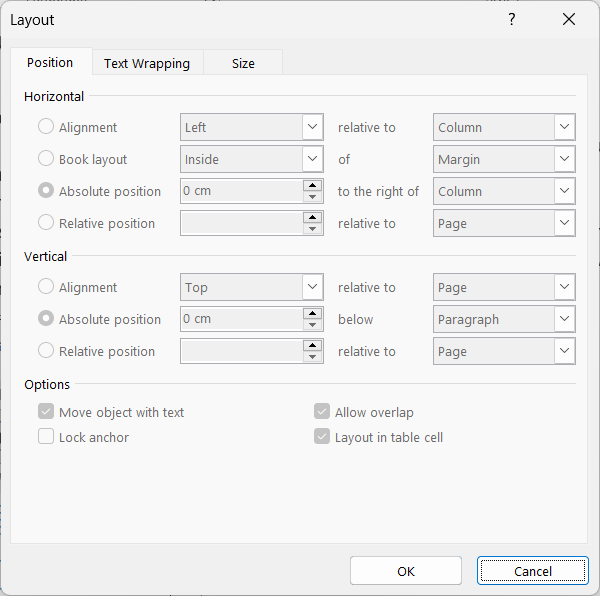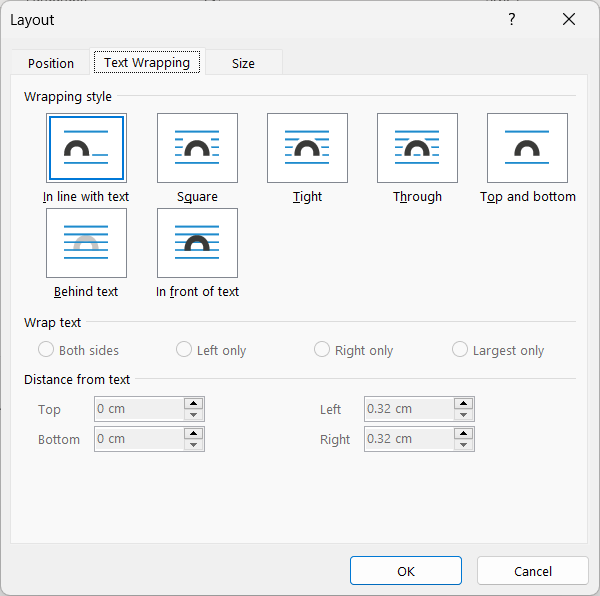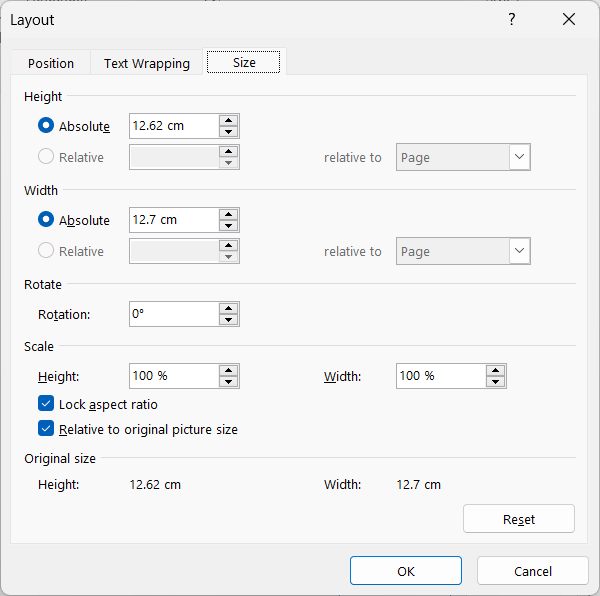What is Text Wrapping
Text wrap is a feature in word processors and text editors that confines all text within predefined margins on occasion. When a line of text is complete, a feature known as "wrap around and run around" moves the cursor to the next line; as a consequence, users are not compelled to push Enter after each line. Word wrap arises when the margins of the document are modified. The word-wrap feature in most word processors is used to maintain information within the predefined margins of the page. Until the user taps the Enter key to trigger a line break, the information will stay on one line without word wrapping.
The phrase "text wrap" explains how text is automatically resized to fit neatly into a given area—such as a text editor or a web page—while staying inside the lines. In order to prevent horizontal scrolling, text that is wrapped normally gets split into lines that fit the width of the container.

Text wrap, commonly known as text flow, is a feature present in word processors and text editors. When the page's edge is reached, it permits the user's text to go on to the next line.
The process of dividing a block of text into lines to accommodate the given width of a page, window, or display area is known as line breaking, sometimes referred to as word wrapping. Line wrap occurs when the text display reaches its maximum capacity and continues on the following line, ensuring that each line fits inside the viewable window. This eliminates the need for horizontal scrolling in order to read the text from top to bottom. In most text editors, word processors, and web browsers, line breaks are often placed between words rather than inside them wherever possible. Word wrap obviates the need to insert line breaks inside paragraphs manually and allows text to be presented in a versatile and adaptable way on displays of varying sizes.
Many word processors offer text wrap capability, which enables you to wrap text around an image or figure. The words encompass the picture.
When word wrapping, soft returns occur when the breaks come at the end of the line; hard returns, on the other hand, start new paragraphs. Soft returns are put at the end of complete words or after the punctuation at the conclusion of a sentence. Additionally, words without hyphens may be wrapped to the following line by applying soft hyphens.
Furthermore, word wrapping is achieved via algorithms. Typically, it is done depending on the smallest word count to give the best readability and aesthetics. Word wrap allows text to be exhibited on displays of varying sizes dynamically and flexibly.
The phrase "text wrap" in HTML refers to the wrapping of text around an image within the code. To achieve this, edit the tag with align="left" or align="right."
Another word for text wrap is text flow.
How to perform Text wrap
- First, insert any image and select the option that is right next to the image (shown below).

- Then, you can see various options on how to wrap that image around the text.

- If you want even more options, then you can click see more and view more options on how you want to wrap your text.



History
A primitive line-breaking capability was originally exploited in a "page printer control unit" created by Western Union in 1955. This system used relays as a substitute for a programmable digital computer, necessitating the development of an algorithm that could operate without the need for data buffers. In this system, all lines were broken at the 70th character if there was no space character discovered or at the first space character following the 58th character if there was no space character found.
Donald Knuth's unpublished 1977 letter, which presented the greedy technique, was preceded by the dynamic programming solution for line-breaking. When Donald Knuth initially explained his TeX typesetting system, it was drawn. Additionally, Knuth & Plass published a more thorough version of it in 1981.
How to format text under a certain character limit
A text may be formatted to a certain length by using a text tool. For instance, you may use the tool to enclose a text that consists of 100 characters. To do this, insert the text that consists of exactly 100 characters into the tool and input "100" in the "wrap text at" area.
What makes text wrap significant?
In order to keep text readable and from extending beyond the visible area, text wrap is important. With text wrap, line breaks would have to be manually inserted, which can be cumbersome and easier to maintain or edit. Text wrap makes sure that your stuff is readable and aesthetically beautiful on a number of displays and devices.
What would make someone deactivate Word Wrap?
It might be smarter to deactivate the word-wrap feature occasionally. For instance, while working with files that include extensive text lines. In this scenario, removing the word-wrap feature might make it easy to review and identify material. Also, it will be much simpler to spot the beginning of each row if you remove Word wrap and create a.csv file with distinct values on each line.
Hard spaces, hyphenation, and word boundaries
Soft returns are commonly applied to complete phrases or sentences as a whole after punctuation. On the other hand, word wrap may occur when a hyphen occurs in a word or phrase. Using a hard hyphen or a non-breaking hyphen in lieu of a standard hyphen could aid in preventing it from occurring in some scenarios.
The Word that lacks hyphens may be made wrappable by adding soft hyphens to it. When the Word is not wrapped, the soft hyphen is not visible. However, the Word is wrapped at the soft hyphen if it is wrapped across lines. There are occasions when word wrap is not feasible between nearby words. Instead of using a standard space between the words in these circumstances, word wrap may typically be avoided by using a non-breaking space or a hard space.
What does Word's wrapped text mean?
Words that flow around an image in a Word document are termed wrapped text. Additionally, wrapped text could show up next to or on top of an image. Because text that is wrapped around photographs feels more natural and takes up less space, many professionals opt to do so. They can also develop more advanced document styles and layouts owing to it. When you wrap text around an image in Word, there are various approaches to creating it. Among the most common text wrap styles are the following:
Line-by-line text wrappings
When you upload an image into Word, it automatically applies the in-line text wrap style to your page. When you use this text wrap style in Word, your photo will appear as a single large letter. Word positions the image at the top and bottom instead of allowing text to flow around it. If you want text to show on the left or right side of the picture, you may also modify the image's size.
Square format text wrappings
Word puts a square border around your text to enclose the image when you choose the square text wrap style. This helps you arrange your text above, below, and to the left and right of your image. To move a photo around your document, you may also click and drag it. When you move your text, Word can automatically resize it owing to the square text wrap tool.
How do word processors text wrap functions operate?
Text wrap in word processors is often performed by automatically aligning words at the end of a line to the following line, ensuring that the text fits inside the appropriate page margins. Word wrapping is the Word for this method. The word processor dynamically rewrites the text to meet the current settings when you alter the text or change the margins.
Can you manage word processor text wrapping?
Yes, most word processors feature text-wrapping control settings. For instance, there are numerous wrapping styles to choose from, such as "wrap to window" and "wrap to ruler." You can also manually add line breaks and modify the margins to affect how the text wraps. You have more control over the design and presentation of your document thanks to these capabilities.
In web design, how does text wrap function?
Cascade style sheets are used in web design to produce text wrap (CSS). Web browsers wrap text by default, enabling it to fit into the limited space of a container element. CSS properties like "text-overflow" and "overflow" can also be used to manage how text flows beyond the width of its container.
How does programming's text wrap function?
When working with lengthy lines of code or text strings that must fit within a specified width, programmers typically employ text wrap. There are several functions and methods available in computer languages and libraries to control text wrapping. These procedures return text with appropriate line breaks inserted at the specified width after receiving as parameters the input text and the desired line width.
Do email clients take advantage of text wrapping?
Yes, email clients typically utilize text wrap to guarantee that an email's content shows adequately on a number of devices and in a variety of email readers. When you type an email, the program automatically formats the text to match the recipient's screen or the email's layout. This makes sure that there is no need for horizontal scrolling and that your material is readable.
Does text wrap affect a document's formatting?
Yes, text wrap can have an impact on a document's formatting, particularly if it incorporates images or other visual components. You can customize how text wraps around shapes or images in desktop publishing software or graphic design tools. You may design visually appealing layouts by manipulating how text flows around these objects with choices like "wrap-around," "wrap through," or "wrap tight."
What is the influence of text wrap on responsive web design?
Text wrap is an essential component of responsive web design that enables content to conform to multiple screen sizes and orientations. You can vary the text size and wrapping behavior depending on the screen width of the device by employing media queries, cascading style sheets (CSS), and fluid layout techniques. This makes it feasible for the text to be readable and formatted correctly on a range of gadgets, such as desktop computers, tablets, and smartphones.
What is the influence of text wrap on accessibility?
Text wrap has a huge impact on how accessible text is. When text is appropriately wrapped, screen readers help visually impaired users understand and explore the material with ease. By reducing lengthy, continuous lines and employing adequate line breaks together with clear visual indications, you may make your material more accessible and easier for everyone to understand.
Can I modify how my text editor wraps text?
Yes, text wrap can be adjusted in a lot of text editors and integrated development environments (IDEs). Word wrapping settings, like wrapping at a given column width or turning wrapping on or off, are often observed. You can also tailor the text wrap feature to your taste by configuring distinct wrapping behaviors for different file types in some editors.
Does text wrap influence text-based document transmission or file size?
No, text wrap does not influence the transmission or file size of documents that incorporate text. Text wrap guarantees that text fits in a given area; it is only a cosmetic modification. However, as extra line breaks are included, particularly long lines of text may cause a minor increase in file sizes. However, the impact on file size is generally small, especially for text files.
How can I address difficulties with text wrap on my website?
There are a few things you may look at if your website is experiencing trouble with text wrap. Make sure the width is set appropriately by first checking the container element's cascading style sheets (CSS) settings. Make sure that any competing styles or overrides aren't altering the text wrap behavior. Furthermore, run your webpage through tests on several browsers and devices to find any issues with cross-browser compatibility that could be causing problems with text wrapping.
Are there any internationalization-related text wrap considerations?
Yes, you should take into consideration how text wraps in different languages when designing for worldwide consumers. The way text wraps within a certain space could vary based on a language's line-breaking standards or average word length. It's vital to test your text wrap solution across a number of languages to make sure that customers worldwide can still read and find the information visually attractive.
Is it feasible for text wrap to modify how objects align on a web page or document?
Indeed, text wrap may alter how objects align on a website or in a document. Adjacent components may move or adjust their placements in reaction to text wrapping around an element, such as a floating box or image. In order to keep the desired visual balance, this may influence the content's overall organization and alignment, demanding considerable thinking and modifications.
Does text wrap affect how legible printed texts are?
The legibility of printed texts may be impaired by text wrap, particularly when the text wraps around graphics or components with unique forms. Making certain the language is understandable and clear even when it wraps over other components is vital when designing for print. In printed texts, precise alignment, font size, and spacing may be essential to retain readability and visual coherence.